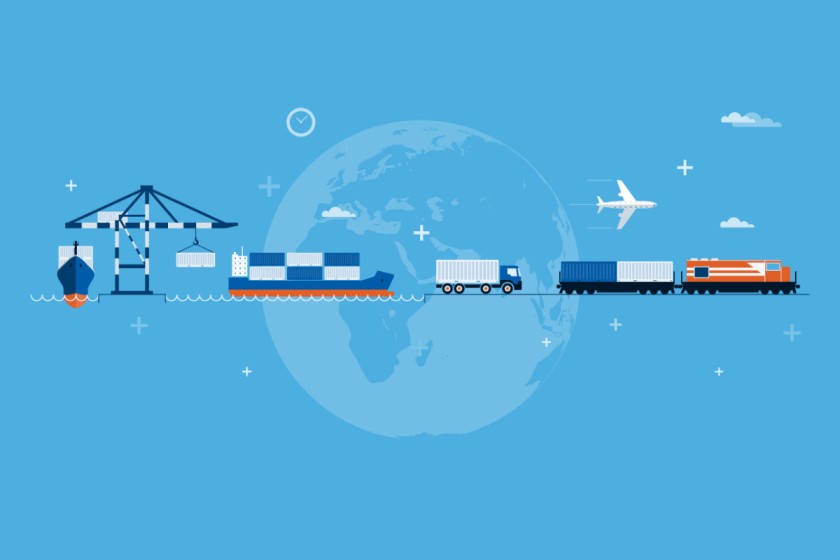- October 13, 2023
How growing conflict is reshuffling global supply chains

This week, amid tragic human costs of conflict, economists are assessing the growing financial impact of geopolitical fractures.
This week, the world is confronting the horrific human cost of conflict. But as more hellish headlines emerge from the Middle East and Ukraine, economists are also trying to tally the financial cost of this geopolitical fracture.
Take the IMF. As its annual meeting gets under way, it has just released its latest World Economic Outlook, with the usual analysis of future trajectories for debt, growth and inflation. One novel feature of this year’s WEO is that the word “fragmentation” is cited no less than 172 times; five years ago, it was mentioned just once.
No surprise there, perhaps. IMF economists (like global investors) fear that rising strife will undermine growth, not least by shattering global supply chains. “The splintering of countries into blocs that trade exclusively with one another… could reduce annual global GDP by up to 7 per cent,” it notes.
Indeed, in a striking reflection of this slide towards a cold war-style mentality, the IMF’s models of the costs of splintering alliances are based on the voting blocs that emerged in the UN after Russia’s invasion of Ukraine — a world in which China and Russia are allied against the west.
Companies are nervous too: an IMF text-mining exercise shows that “prior to the Covid-19 pandemic, firms barely mentioned keywords related to fragmentation, but usage surged after Russia’s invasion of Ukraine”. This increase is particularly stark in the commodities sector.
One intriguing question the WEO raises is how far this bellicose chatter has actually altered western supply chains? Is geopolitical wrangling, in other words, leading to “reshoring” and “friend-shoring”, or not? It is a difficult query to answer accurately, since supply chains are notoriously opaque. Most previous analysis on this issue has relied on cross-border trade and foreign direct investment statistics.
These reveal some realignment; US FDI into China has tumbled from a peak of $20.9bn in 2008 to an 18-year low of $8.2bn in 2022. But since the EU retains a record-high trade deficit with China — and the US deficit also hit a record this year — this macro-level data does not really explain what is happening with micro-level supply chains.
So, in a bid to contribute to this debate, the Bank for International Settlements has just conducted a novel bottom-up exercise. This uses a vast global data base of companies’ financial accounts “and their declared customer and supplier relationships” to create two snapshots of activity, in December 2021 and September 2023. The results deserve wide attention.
This exercise starts by noting that global value chains “are in the midst of a far-reaching realignment” since the Russian invasion of Ukraine and ensuing debates on nearshoring and friend-shoring have “focused attention on the merits of building shorter, more resilient supplier relationships”. The analysis then suggests that global companies’ dependence on cross-border suppliers did fall “markedly” between 2021 and 2023: most strikingly, western companies have reduced one-step sourcing from China.
But that does not mean the creation of western-only regional trade networks. Instead, end users are sourcing basic and intermediate goods from places such as China via intermediaries in countries like Vietnam. The result is a stark “increase in the indirect cross-country links, as new firm nodes interpose themselves into existing supply chains”, the BIS says.
For Asian-based end users, this is producing a fairly cohesive trade network, since Asian regional integration has risen. For American and European end users, however, it means that supply chains have become increasingly complex. What is emerging is not so much reshoring as reshuffling — a rising level of complexity that has expanded the “distance” in supply chains (layers between raw materials and end users).
This has three key implications. First, it means that western companies remain exposed to the vagaries of geopolitics; as a penetrating report from the Centre for Economic Policy Research shows, if China stops selling basic materials to intermediaries, end users would suffer.
Second, this creates oversight challenges for western corporate boards and investors since it is harder for companies to track what suppliers are doing (say, on environmental or social issues) if there are multiple stages in a supply chain.
Third, this trend, as CEPR notes, is inflationary. Western companies previously created one-step US-China trading links to increase efficiencies and cut costs — this was one raison d’être for globalisation. If supply chains are now becoming more multi-layered, costs will rise; “slowbalisation” is replacing globalisation, as Morgan Stanley says.
The key point, then, is that it is not just the spectre of a cold war ban on trade between geopolitical blocs that should worry investors and the IMF — a more subtle lengthening of supply chains will raise inflation and possibly curb growth too.
Western customers might well view that a fair price to pay for better national security and corporate resilience. Fair enough. But if the trend continues, it will create a markedly different world from recent decades. Reshuffling — not just reshoring — is the issue to watch now.
Written by Gillian Tett for The Financial Times
© The Financial Times Limited [2020]. All Rights Reserved.
FT and Financial Times are trademarks of the Financial Times Ltd. Not to be redistributed, copied or modified in any way
